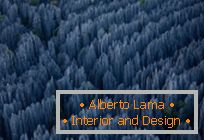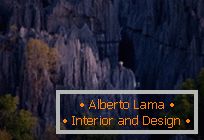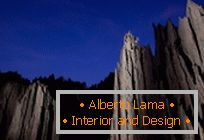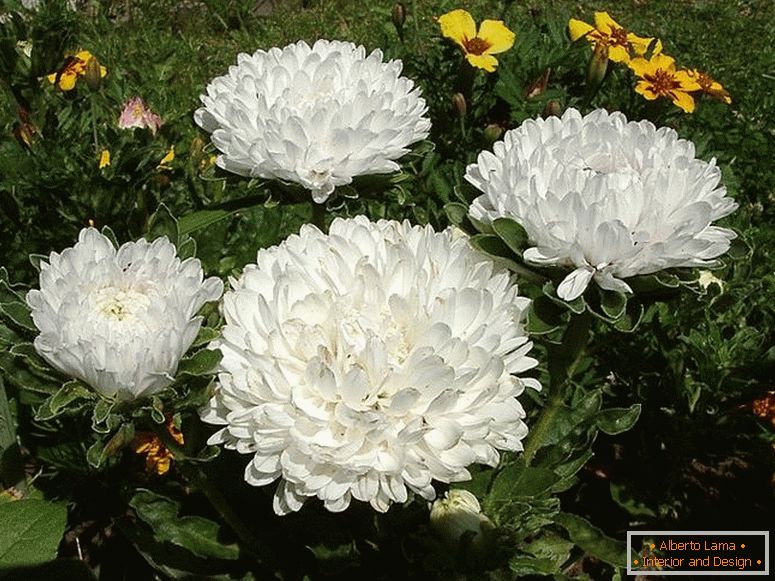Zingi de Bemaraha Nature Reserve extends from the plateau of Bemaraha to the river Manambulu on an area of 152 thousand hectares (the largest protected area in Madagascar). The reserve covers a complex of karst rocks of gray-blue color and a chain of peaks up to 50 meters high, whimsically processed by wind and water for millions of years. In this "stone forest" there live lemurs, which are snow-white in color. The entrance costs 10 euros, for which you can walk around the observation platforms and climb along the cliffs and crevices.
Natural wonder of the world - Tsingy de Bemaraha Reserve (Tsingy de Bemaraha Reserve) - a limestone plateau dotted with spiers of yellow limestone, which form a real "stone forest". The reserve is located about 80 kilometers from the west coast of Madagascar, stretching from the plateau of Bemaraha to the river Manambulu.
The road to the park Tsingi de Bemaraha is very difficult and heavy, all roads are very bad, (average speed of 15 km / h) only the road back and forth takes 2 days, still need a day to inspect the park.National Park has several names in Russian: the most popular is Tsingi de Bemaraha, as well as Tsingzhi du Bemaraha, Tsingji de Bemaraha.
Tsingi de Bemaraha is a unique mineral formation for Madagascar, called karst, which resulted from erosion, under the influence of acid rain and water, which gradually, over many centuries, dissolved the chalky layers. Over time, this led to the formation of stunningly beautiful karst landscapes and 30-meter long limestone needles that rise to the sky in an area of 152 square kilometers. Some reach a height of fifty meters and are cut by canyons and narrow gorges.
Zingi de Beamaraja declared national reserve in 1927, this unusual stone "forest" was included by UNESCO in the list of World Heritage sites in 1990. Part of the Park was opened to visitors in 1998.
The tops are so close to each other that the area becomes virtually impassable for humans, but not for lemurs, which there are a great many. These cute, agile creatures look absolutely strange against the background of their surrounding rocky and harsh terrain.
Local people say that in this whole area you can hardly find a piece of flat land, large enough to put a foot on it, - a factor that helps to save at least part of the plants and animals of Madagascar from destruction.
Национальный парк Zingi de Beamaraja состоит из двух частей — маленькие цинги и большие цинги. Маленькие расположены у входа в парк. До больших нужно ехать еще 17 километров от входа в парк. Ехать 17 километров занимает 2 часа.
The eastern border of the protected areas passes along the cliff of Bemaraha, which rises 400 meters above the valley of the Monambolo River. The northern part of these lands, which is closest to the settlements, and more accessible for visiting, is a combination of undulating hills and yellow limestone spiers and teeth.
Лемуры Sifakas, рискуют каждый день, используя свои длинные ноги, они переходят от одной скалы к другой, перемещаясь по карстовым лесам заповедника. Очень мало мест обитания остается для лемуров, но лемуры sifakas пока еще выживают, в сложном балансе между человеком и природой, благодаря трудной доступности заповедника Zingi de Beamaraja. Орлы (Fisher eagles) находятся на грани исчезновения. Их можно встретить на берегах реки Manambolo, и в Национальном Парке Zingi de Beamaraja.
Photos: Stephen Alvarez
Photogallery Total | 8 pictures










